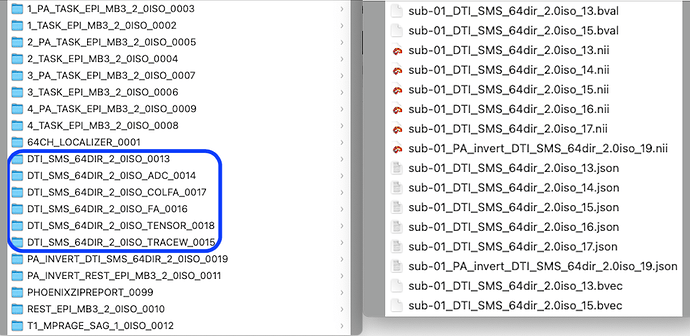You can always cut and paste the contents of the JSON text file into this web page (see below). Alternatively, feel free to send a link for a online storage (e.g. dropbox) download of the sequence PDF or the raw DICOMs to my institutional email.
{
"Modality": "MR",
"MagneticFieldStrength": 3,
"ImagingFrequency": 123.247638,
"Manufacturer": "Siemens",
"ManufacturersModelName": "TrioTim",
"InstitutionName": "USC",
"InstitutionalDepartmentName": "Radiology",
"InstitutionAddress": "Medical Center Dr 5,Columbia,SC,US,29203",
"DeviceSerialNumber": "35131",
"StationName": "MRC35131",
"PatientPosition": "HFS",
"ProcedureStepDescription": "Research^MCBI_TESTING",
"SoftwareVersions": "syngo MR B17",
"MRAcquisitionType": "2D",
"SeriesDescription": "ax_asc_35sl",
"ProtocolName": "ax_asc_35sl",
"ScanningSequence": "EP",
"SequenceVariant": "SK",
"ScanOptions": "FS",
"SequenceName": "*epfid2d1_64",
"ImageType": ["ORIGINAL", "PRIMARY", "M", "ND", "MOSAIC"],
"NonlinearGradientCorrection": false,
"SeriesNumber": 6,
"AcquisitionTime": "13:49:35.305000",
"AcquisitionNumber": 1,
"SliceThickness": 3,
"SpacingBetweenSlices": 3.6,
"SAR": 0.0954132,
"EchoTime": 0.03,
"RepetitionTime": 3,
"FlipAngle": 76,
"PartialFourier": 1,
"BaseResolution": 64,
"ShimSetting": [
10737,
-10591,
3103,
485,
9,
-267,
-184,
73 ],
"DelayTime": 0.5,
"TxRefAmp": 399.953,
"PhaseResolution": 1,
"ReceiveCoilName": "HeadMatrix",
"CoilString": "T:HEA;HEP",
"PulseSequenceDetails": "%SiemensSeq%\\ep2d_bold",
"RefLinesPE": 32,
"CoilCombinationMethod": "Sum of Squares",
"MatrixCoilMode": "GRAPPA",
"PercentPhaseFOV": 100,
"PercentSampling": 100,
"PhaseEncodingSteps": 64,
"AcquisitionMatrixPE": 64,
"ReconMatrixPE": 64,
"BandwidthPerPixelPhaseEncode": 55.804,
"ParallelReductionFactorInPlane": 2,
"EffectiveEchoSpacing": 0.000279998,
"DerivedVendorReportedEchoSpacing": 0.000559996,
"TotalReadoutTime": 0.0176399,
"PixelBandwidth": 2111,
"DwellTime": 3.7e-06,
"PhaseEncodingDirection": "j-",
"SliceTiming": [
0,
0.07,
0.1425,
0.215,
0.285,
0.3575,
0.43,
0.5,
0.5725,
0.645,
0.715,
0.7875,
0.86,
0.9325,
1.0025,
1.075,
1.1475,
1.2175,
1.29,
1.3625,
1.4325,
1.505,
1.5775,
1.6475,
1.72,
1.7925,
1.8625,
1.935,
2.0075,
2.0775,
2.15,
2.2225,
2.295,
2.365,
2.4375 ],
"ImageOrientationPatientDICOM": [
1,
-1e-16,
0,
1e-16,
0.994151,
-0.107999 ],
"ImageOrientationText": "Tra>Cor(-6.2)",
"InPlanePhaseEncodingDirectionDICOM": "COL",
"ConversionSoftware": "dcm2niix",
"ConversionSoftwareVersion": "v1.0.20230411"
}
